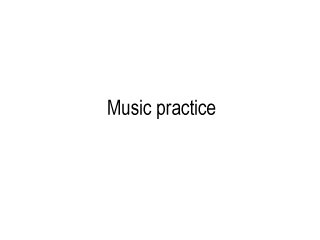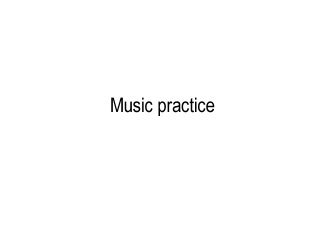Gunning for higher specifications doesn't always improve things when it comes to phones. For example, an 8 megapixel camera sounds better than a 5 megapixel unit, but the chances are that the actual CMOS sensor will be the same size and so you'll not actually be gathering any more light or information. A 5mp camera in a phone already suffers from a multitude of sensor pixel issues, where the individual pixels are packed so closely together that they end up affecting their neighbours and the software in the OS has to process images to reduce noise and artefacts. Pack 60% more pixels in the same space and you've simply created more potential for (confusing) digital noise, however high the megapixel count. To this day' some of the very best photos I've ever taken, in terms of colour and clarity, when printed at 6" by 4", were using the fixed focus 2 megapixel camera in the Nokia E70.
The same phenomenon can be seen in, and this is the real subject of this rant, the current cry for VGA screens in phones. Now, don't get me wrong, on full-sized, full-face devices like the iPhone and HTC Touch Diamond, with 4" disays, VGA or similar can make sense because there's physically plenty of space. But crying that Nokia were wrong to put a QVGA display in the 2.4"-screened E71 is just silly.
Most applications rely to a large degree on display of text - after all, that's how us human beings communicate information - and there's a certain display size below which someone with average eyesight is going to struggle to read it comfortably. Text display on a 2.4" screen held at a distance of about 25cm - as I'm doing with the Nokia E71 I'm using to type this article on [hey, you guys get a typing demo on a new smartphone as well as an editorial!] - is already smooth enough to be crystal clear. Doubling up the pixels to display the same fonts on a VGA display would, if anything, make the text characters blockier. Rewriting the OS text routines to draw double-size characters with VGA pixel accuracy will make the text look slightly smoother, yes, but for 90% of tasks the average user will be hard pressed to notice or care.


On the left, text at typical S60 size and font in QVGA - on the right, text written at double the font size on a VGA 'screen' and then resampled down to be viewed at the same physical size - see much of a difference? No, neither could I - this is the classic case when going VGA makes little difference to most applications
Even looking at applications and uses that can arguably use a greater resolution, things are not clearcut. Web is a good example. With four times as many pixels, a far higher fraction of a typical web layout can be rendered in one go – it'll look gorgeous but you can't easily read most of the information on it. So you end up using the zoom function – which, in S60 Web only goes to 125%, not enough to make the text size comfortable and ruining the experience. Even on the Nokia E90's huge 800 pixel wide screen, where you'd expect Web to be far superior, I was forever running into sites and layouts whose apparently miniscule text was very frustrating to read. At the end of the day, a 2.4” screen can never do exactly what a 17” one does on the desktop – which is why better solutions for mobile have come along, such as the zooming used in Opera Mini and in Safari on the iPhone, where you accept that you can't read the overview but you then zoom in to get the actual information. Page overview in S60 Web has the right idea, but it's not quite so seamlessly integrated.


On the left, a typical QVGA view of the AAS web front page, as seen through the likes of Web - on the right, (roughly) what you'd see if the S60 device had had a VGA display. Me, I'd be reaching for the 'Zoom' function, and even this only upsizes things by 25%
Photo viewing should be much better on a VGA screen, of course – after all, you're not having to throw away as much information in order to render the image – but at the end of the day, you're still seeing a huge downsample – the original is going to be several megapixels at least and you're seeing it at 0.3 megapixels, even on a VGA display. And, again, unless you've got 20/20 vision, it's hard to tell a QVGA downsample from a VGA one on a 2.4” display.
Then there are performance issues to take into account. With the limited processor speeds in most phones, for purposes of preserving battery life, it's hard enough as it is to throw pixels around the screen fast enough – witness how the E71 struggles on some games. Multiply the number of pixels by four and, without serious electronic aid in the form of dedicated graphics chips, you've got a recipe for slow screen updates and a poor user experience.
Finally, and perhaps most importantly of all, there are still big cost penalties in using VGA. The physical displays cost a lot more, are more fragile, then there's the cost of rejigging the rest of the device's electronics to match, the extra cost of providing extra chips to support the display, the cost of having to rewrite large parts of the operating system to cope with all the pixel doubling/scaling and font reworking needed, and so on. At the end of the day, these costs will be passed on to you and you'll pay a lot more for your phones.
Yes, in time, the technology will improve, VGA will be more integrated and costs will come down and I daresay we'll see higher resolutions on all size displays – I'm not such a Luddite as to say QVGA will rein forever. But it's got a year or two of useful and practical life left it in yet.
In summary, although it's currently trendy in the blogosphere to tritely shout down a manufacturer for using a QVGA display still (in 2008, shock horror), the realities of phone size mean that this is still the best overall display resolution for most 'phone like' products.
Steve Litchfield, All About Symbian, 22 June 2008
